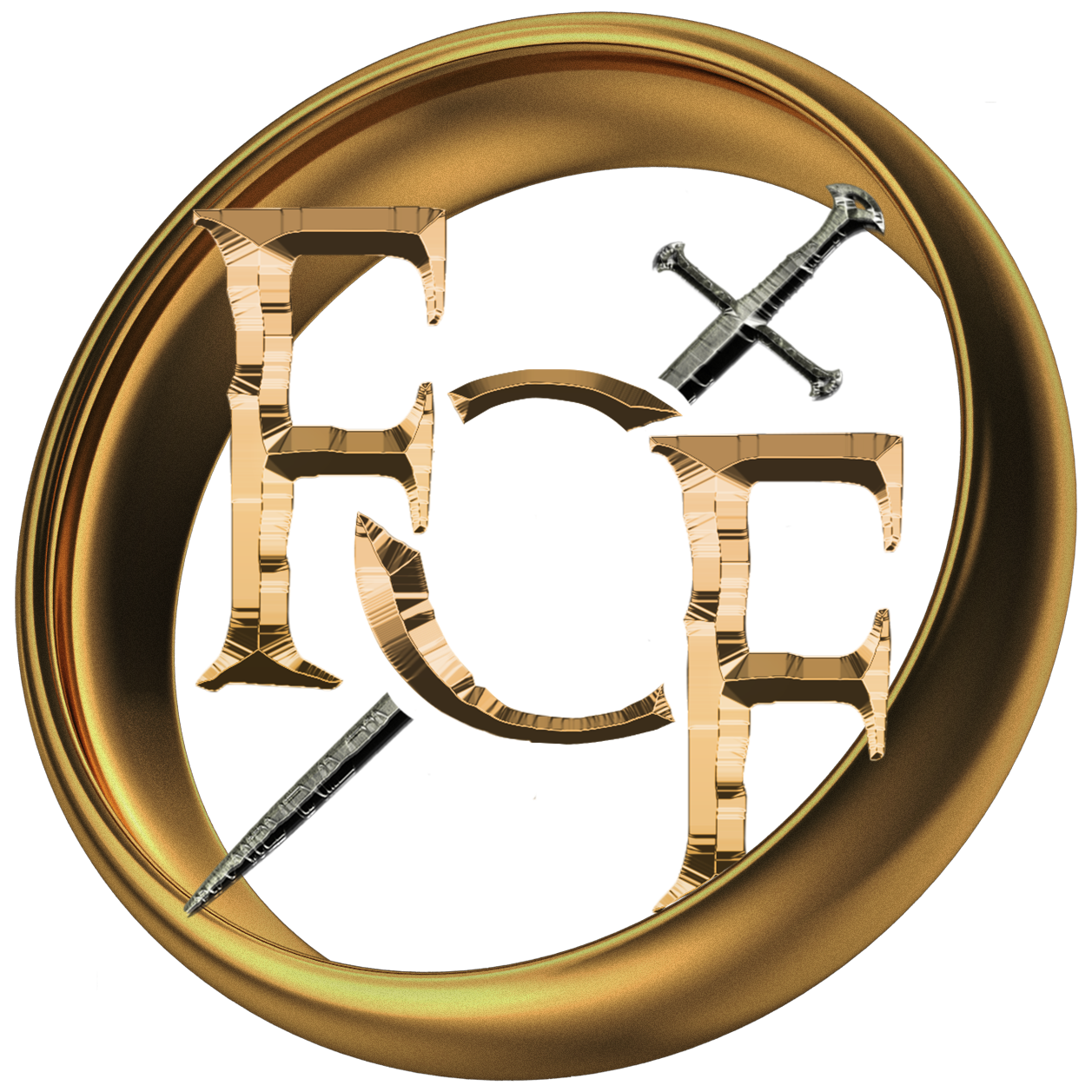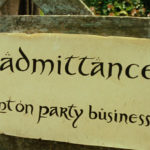
Prosody in Tolkien and The Rings of Power
J.R.R. Tolkien, it is fairly well known, was a philologist. The word is not now much used in academia. In contemporary terms a philologist might be called a historical or comparative linguist. However, philology was a broader discipline than that. In today’s highly specialized world it might come as a surprise to learn that Jakob Grimm, of the Brothers Grimm (yes, those Brothers Grimm), was largely responsible for elevating philology to a new science. And he was a lawyer by training. In this he was also influenced by Rasmus Christian Rask, who was nominally a student of theology, but was really more interested in studying languages. By the time Tolkien entered academia, the formerly illustrious science of philology was undergoing a long, drawn out divorce between “Lit and Lang” (that is, English literature and linguistics). Tolkien fought the long defeat to halt this divorce, but it was perhaps inevitable that specialization would win out in the end.
Coming along well after the divorce between “Lit and Lang” had been formalized, I tend to approach Tolkien’s Legendarium from the perspective of a linguist, as well as a historian. Literary criticism was never my favorite activity in school, and although I used to occasionally dabble in poetry, I always preferred reading and writing prose. So it is rather ironic that my first article for the Fellowship of Fans website is largely about poetry. One of the more interesting revelations (to me, at any rate) about Amazon Studio’s upcoming streaming series, The Rings of Power, regards the attention that the showrunners have paid to language while developing the show. According to showrunner J.D. Payne, as quoted in the Vanity Fair article, “10 Burning Questions About Amazon’s The Rings of Power“, “We even came up with hero meters for each different race in Tolkien. Some of them will speak in iambs. Some of them will speak in dactyls. Some of them will speak in trochees.” This goes well beyond the conventional use of dialects and accents to distinguish characters of different backgrounds, as used in various fantasy and science fiction properties. I usually tend to be impressed when a Hollywood production illustrates the differences between languages in a way that goes beyond speaking standard Modern English with a slight dialect or accent, so I am intrigued by this convention of different “races” speaking in different meters. If done well, it may cause me to end up cringing all the harder in comparison when watching the New Line films, and the dialog goes off script (as Tolkien wrote it). On the other hand, it seems to me that if it is not done well, it could easily end up seeming silly, forced, or artificial, and cause most native Modern English speakers (a large portion of Amazon Studio’s intended audience, no doubt) to find the show unwatchable on that account.
That is all a matter of speculation for now, but first, what exactly does this all mean, anyway? What are iambs, dactyls, and trochees? What do they actually sound like? And what about the other rhetorical techniques Payne mentioned, such as parallelism, inverted parallelism, and chiasmus? I’m pretty sure I’ve learned the metrical terminology before, but not being a professional poet, I never paid much attention to them. So I’ve taken the time to look them up and find examples of each in poetry. Note though, that although I will be using poetry for the most part to illustrate these techniques, the actual dialog in the show will likely (?) be prose. These techniques, whether used in prose or poetry, are referred to as “prosody”.
Meter
Syllables in human languages tend to fall into patterns. In some languages syllables may be distinguished by high and low pitches. In other languages some syllables are longer, and some are shorter. Some languages have a fixed set of tones, into one of which each syllable falls. In English syllables are distinguished primarily by stress, usually classified into three categories: primary stress, secondary stress, and unstressed. In Modern English the noun “consort” and the verb “consort” are distinguished by the syllable on which the primary stress falls. There is a pronunciation difference too, but it originates from the difference in stress. The metrical terms iamb, trochee, and dactyl come from Greek, and were originally applied to syllable length in Classical Greek and Latin poetry. In English these terms have been adapted to apply to stress. There are numerous different patterns of two or three syllables, but as J.D. Payne only mentioned three, I will only describe those three here.
Iamb
In English poetry, an iamb is a pattern of two syllables in which the first syllable is unstressed and the second is stressed: “da DUM”. An example of an English word that follows this pattern is “attack” (“at-TACK”). Iambic verse is very common in poetry. One famous example is “Jabberwocky” by Lewis Carroll, which is written in iambic tetrameter (“da DUM da DUM da DUM da DUM”):
‘Twas brillig, and the slithy toves
Did gyre and gimble in the wabe.
Tolkien also often used iambic verse. For example, “The Road Goes Ever On” is entirely (or mostly, depending on how one stresses the first two syllables in the second line) in iambic tetrameter:
The Road goes ever on and on,
Down from the door where it began.
“The Fall of Gil-galad” is another example of Tolkien’s poetry that is also in iambic tetrameter:
Gil-galad was an elven-king.
Of him the harpers sadly sing;
the last whose realm was fair and free
between the Mountains and the Sea.
Trochee
A trochee is a pattern of two syllables in which the first syllable is stressed and the second is unstressed: “DUM da”. Many native English words follow this pattern, such as “water” (“WAT-er”). Trochees are also quite common. Edgar Allen Poe’s “The Raven” is a well-known example, in which most of the lines are in trochaic octameter (“DUM da DUM da DUM da DUM da DUM da DUM da DUM da DUM da”):
Deep into that darkness peering, long I stood there wondering, fearing,
Doubting, dreaming dreams no mortal ever dared to dream before;
Examples of trochaic verse seem to be less common in Tolkien’s poetry. An earlier version of “The Road Goes Ever On” appears in The Hobbit, and is in a mix of iambic tetrameter and trochaic tetrameter catalectic. Trochaic tetrameter catalectic is trochaic tetrameter that is missing the last unstressed syllable (“DUM da DUM da DUM da DUM”):
Roads go ever ever on,
Over rock and under tree,
Dactyl
A dactyl is a pattern of three syllables in which the first syllable is stressed and the next two syllables are unstressed: “DUM da da”. An example of an English word that follows this pattern is “beautiful” (“BEAU-ti-ful”). Dactylic verse is not as common as iambic or trochaic verse in English poetry. One famous is example is “The Charge of the Light Brigade” by Alfred, Lord Tennyson. Many of the lines are in dactylic dimeter (“DUM da da DUM da da”) or some variation thereof:
Half a league, half a league,
Half a league onward,
Just as in poetry in general, dactylic verse seems not to be very common in Tolkien’s poetry, but there are some examples of lines containing dactyls. For example, the first line of “Seek for the Sword that was broken” is in dactylic trimeter catalectic (“DUM da da DUM da da DUM da”):
Seek for the Sword that was broken:
In Imladris it dwells;
Rhetorical Devices
In the above-mentioned Vanity Fair article, showrunner J.D. Payne also mentioned several rhetorical devices that are used in poetry and other kinds of literature: “I’ve also spent a lot of time studying Hebrew poetry and parallelism and inverted parallelism and chiasmus and all these cool rhetorical strategies that poets and prophets from thousands of years ago would use to communicate sacred material. And Tolkien, sometimes, will play in that kind of a sandbox.” Although he did not specifically say these rhetorical devices will be incorporated in the show’s dialog, it would seem likely to be the case, especially since he says Tolkien also used them.
Parallelism
Parallelism is the repetition of an idea or grammatical structure with variation. The effect of the repetition may be to reinforce an idea, or it may be to provide a contrast. Parallelism is quite common in many different forms of literature or rhetoric, from many different cultures. Parallelism is common in the Bible. Here is a well-known example from Proverbs 15:1 (King James Version):
A soft answer turneth away wrath: but grievous words stir up anger.
Here the parallelism is used to provide a contrast between the results of a “soft answer” versus “grievous words”: the former “turneth away”, but the latter “stir up” wrath/anger. Tolkien also uses parallelism, notably in the famous Ring Verse:
One Ring to rule them all, One Ring to find them,
One Ring to bring them all, and in the darkness bind them,
Here the parallel elements complement each other to evoke the power of the One Ring.
Inverted Parallelism
Inverted parallelism is similar to parallelism, except that the structure of the second element is reversed from that of the first element. Inverse parallelism also often occurs in the Bible. An example is in Mark 2:27 (KJV):
And he said unto them, The sabbath was made for man, and not man for the sabbath:
The uses of inverted parallelism are similar to those of regular parallelism. Here the order of the terms “sabbath” and “man” are reversed to express contradiction. Inverted parallelism also occurs in the nursery rhyme “Old King Cole”:
Old King Cole was a merry old soul,
And a merry old soul was he;
Here the second line reinforces the first line, with “he” in the second line corresponding to “Old King Cole” in the first. I have yet to find an example of inverted parallelism in Tolkien, but I have only begun my search. If any reader has found an example, please leave a comment below.
Chiasmus
Chiasmus is an extended form of inverted parallelism in which multiple ideas are expressed in one order, and then paralleled in the reverse order. Indeed, often inverted parallelism and chiasmus are treated as synonyms. Chiasmus, however, can get much more complicated than the simple examples in the previous section. A relatively simple example will suffice, from Amos 5:4-6 (KJV):
4 For thus saith the Lord unto the house of Israel, Seek ye me, and ye shall live:
5 But seek not Bethel, nor enter into Gilgal, and pass not to Beersheba: for Gilgal shall surely go into captivity, and Bethel shall come to nought.
6 Seek the Lord, and ye shall live; lest he break out like fire in the house of Joseph, and devour it, and there be none to quench it in Bethel.
Here we see an example of chiasmus in which ideas are expressed in one order: “house of Israel – Seek ye me, and ye shall live – Bethel – Gilgal”; and then expressed again in reverse order: “Gilgal – Bethel – Seek the Lord, and ye shall live – house of Joseph”. In this case “Beersheba” is not repeated, but used as a pivot point, but frequently in chiasmus the last idea in the first half of the chiasm is simply mirrored at the beginning of the second half. I also have yet to find an example of chiasmus in Tolkien, though I have not been looking long. I am somewhat skeptical that there would be a clear-cut example of chiasmus in Tolkien, but I would be interested to know if there is such a case.
Alliterative Verse
I said that I always preferred poetry to prose, but there is, in fact, one form of poetry that captured my imagination at a fairly early age. It is a form of poetry that is not now common, yet is ancient, and somehow managed to endure in some form through a thousand years and more. It is alliterative verse. Perhaps the oldest example is found on one of the Golden Horns of Gallehus (ca. 4th century), with this runic inscription in what is usually classified as Proto-Norse:
ek hlewagastiʀ holtijaʀ horna tawidō
“I, Hlewagast [son?] of Holt made the horn.” (The letter ʀ represents a rune that was originally pronounced as “z”, but at some point became pronounced the same as “r”. The exact pronunciation at the time the inscription was made is not certain.)
This inscription contains the important elements of Germanic alliterative verse: lines consisting of four stressed syllables, half-lines of two stressed syllables each, alliteration of some (but not all) stressed syllables in each half-line. Similar forms may be found in Old English, Old Saxon, and Old Norse poetry, among others. In Iceland the tradition of alliterative verse has continued to the present. In English alliterative verse died out as the Normans displaced the Anglo-Saxon ruling class, but alliterative verse saw a revival in the 14th century. This revival, which included such poems as “Piers Plowman” and “Sir Gawain and the Green Knight”, was one of Tolkien’s areas of scholarly interest and expertise. Tolkien himself wrote numerous poems in alliterative verse. In addition to many of the songs of the Rohirrim, the Ents’ list of living creatures is an example:
and hungry as hunters, the Hobbit children,
the laughing-folk, the little people,
This brings me back to Amazon Studios’ The Rings of Power, and the one bit of dialog we’ve heard so far from the show:
There’s wonders in this world, beyond our wandering.
Some have noted the alliteration in this line, but it is not merely alliteration. Whether it is something the showrunners have studied themselves, or whether they simply picked it up from Tolkien, this is a clear-cut example of Germanic alliterative verse.



No Comments